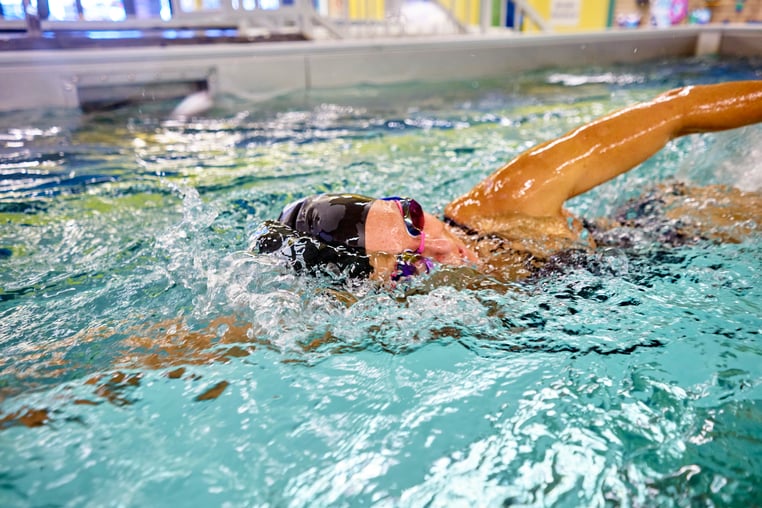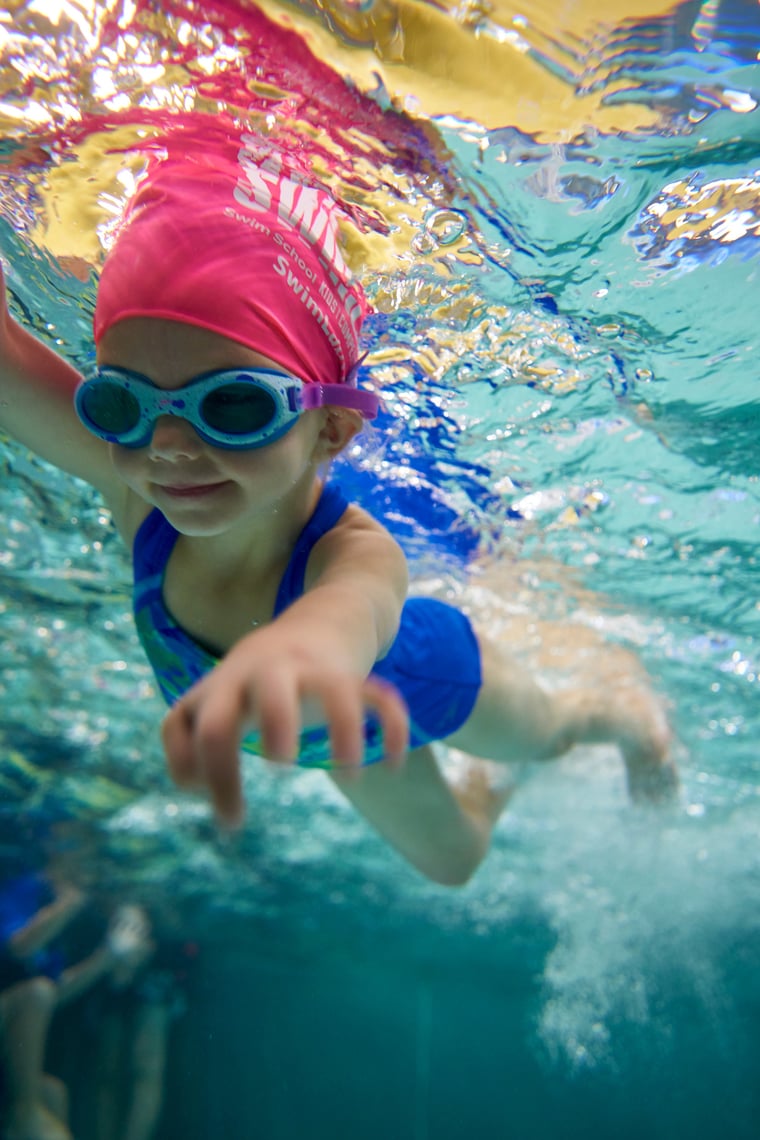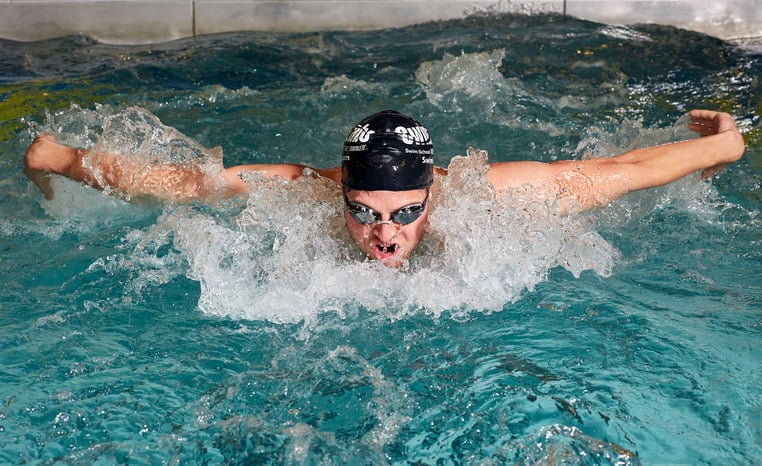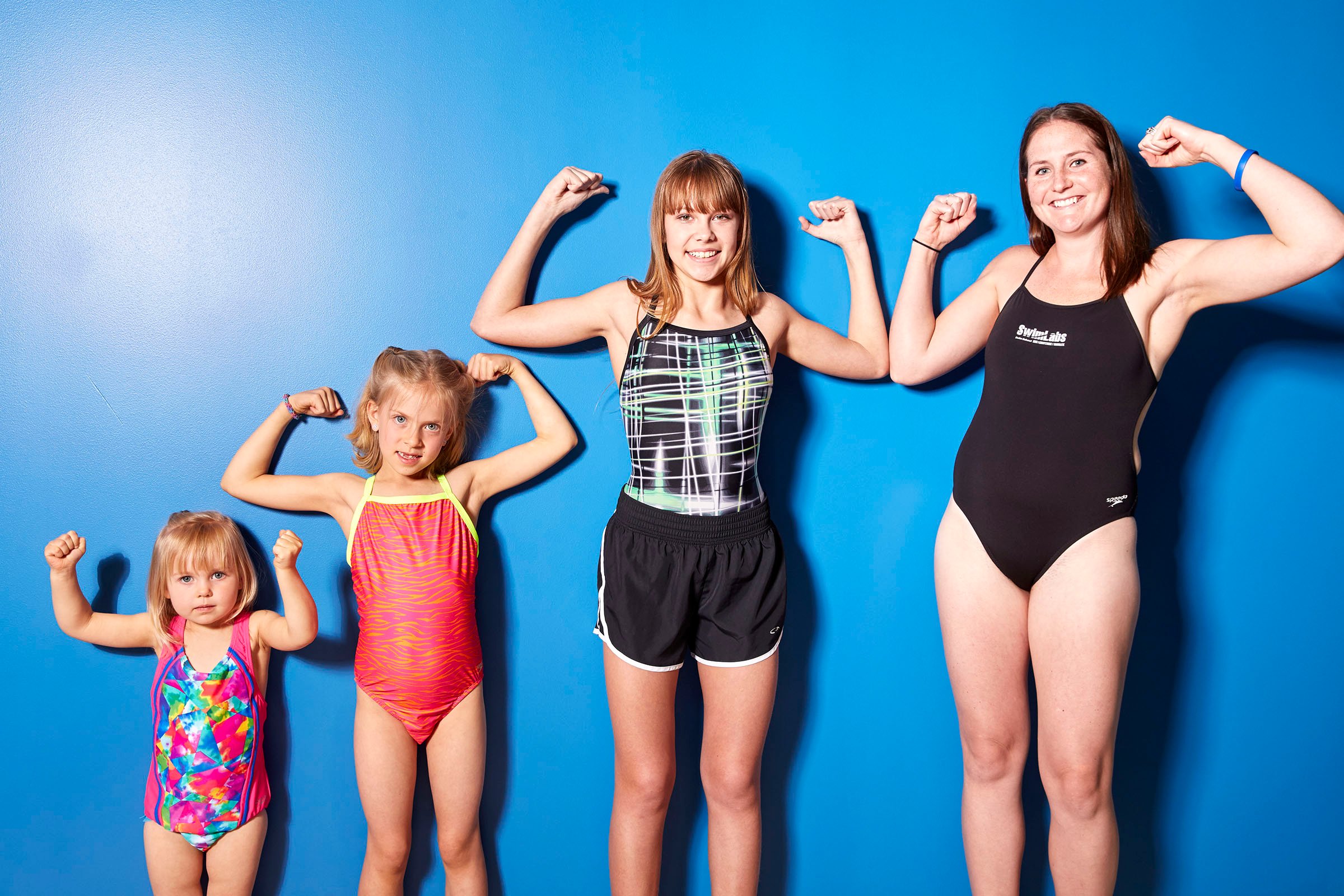SwimLabs Stories: Forty Minutes
Why SwimLabs? Forty minutes. I cut forty minutes off of my 10k swim after working at SwimLabs. My stroke dramatically improved as I eliminated...
3 min read
Melissa Mantak, Elite Swim Coach : Mar 16, 2018 5:31:24 PM


In my work, teaching and coaching go hand in hand. I teach skills and coach how to apply them over time to reach your goals and dreams. When asked about how to improve open water swim performance in a race, my first question is: are you optimizing your pool time now?
Fitness will only take you so far. By improving your skill, strength, and speed in the pool now, you increase your success on race day. Here are 8 tips to implement in your training:
You can then focus on one or two parts at a time, gradually working them into a whole. Drills have a specific focus and purpose. (Mindless drilling will not improve your stroke!) They need to be specifically targeted to your weaknesses to help you improve your skill and technique. The magic in drills comes when you continually repeat: drill/swim/drill/swim, taking that targeted piece and working it into the whole.
Example: one arm drill. By working on each arm in isolation, you can focus on improving one arm pull at a time. Then swim the whole stroke with a new feel and power in the water.
-554132-edited.jpg?width=762&height=298&name=Shot10_CompetitiveSwim149%20(1)-554132-edited.jpg)
How do you know what drills to do? The best drills are the ones that target your specific weaknesses so your whole stroke gets stronger. Having a trained coach watch you swim and offer feedback is the best way to make big improvements. The next step toward rapid improvement is to see yourself swim on film, above and below the water. (Scary to some, I know! But such a powerful teaching tool!)

We take this critical life function for granted because it’s automatic in our intelligent bodies. In the swim, the water dictates the fact that you cannot breathe whenever you want. (Maybe you’ve tried this and choked on some water!!) You must follow the rhythm and coordination of your body rotation and arm stroke. A strong, forceful, quick inhale and exhale is a must to get enough exchange of air. If you don’t get enough air, you are forced to stop or panic may set in; a major obstacle in a race. Breathing also calms us when anxiety threatens.

How low or high your body sits in the water dictates how much work you have to do to propel yourself through the water. If your legs and hips rest low on the water, you’re increasing your drag forces. Most of your work to propel yourself becomes work to keep your head above water so you can breathe and survive. Body position can be improved with a few simple steps, such as improved kick mechanics, head position, and core strength.

Our bodies learn new skills quicker when we repeat them more frequently. Working on new skills with short frequent bouts of 15-30 minutes 3-5x/week is more beneficial than one session per week of 60 minutes. (But, any frequency is better than NO frequency!)

There’s a lot of information out there about not using your kick in the triathlon swim to save your legs for the bike and run. Yes, the kick requires more oxygen to fuel the big muscles in your legs. This is true, but if you do not have an efficient kick, you do not have an efficient stroke. Your kick is a weapon, a tool in your toolbox to be used when needed. But, if your kick is inefficient and untrained, your legs are merely extra weight to drag through the water.

Remember the start of your last race? Did you get crushed at the start or rounding the first buoy and end up gasping for air? Include sprint and threshold sets in your pool swim sets weekly. You’ll be much better prepared for the intensity of the race when you do.

Once you’re about 8 weeks out from open water swim season, time to start working on your open water skills in the pool. Ideally, you have a group to swim with and you can take all the lane lines out of the pool. Not all of us have this available, but you can work on your sight breathing in the pool. Non-stop swims where you don’t touch the wall simulate the non-stop nature of swimming in the open water.
Once the water warms up in the spring, get out to the open water to practice all skills, all speeds as often as possible.
Are you ready to conquer the swim this year?

Why SwimLabs? Forty minutes. I cut forty minutes off of my 10k swim after working at SwimLabs. My stroke dramatically improved as I eliminated...

Summer is almost here! Vacations are on the horizon and summer activities are just around the bend. Growing up, we loved our water balloon fights,...

Vacations are all about relaxation, fun, and making memories with your loved ones. But when your getaway includes water—whether it’s a hotel pool, a...

Visit our Water Safety Blog for expert advice, family tips, and more!